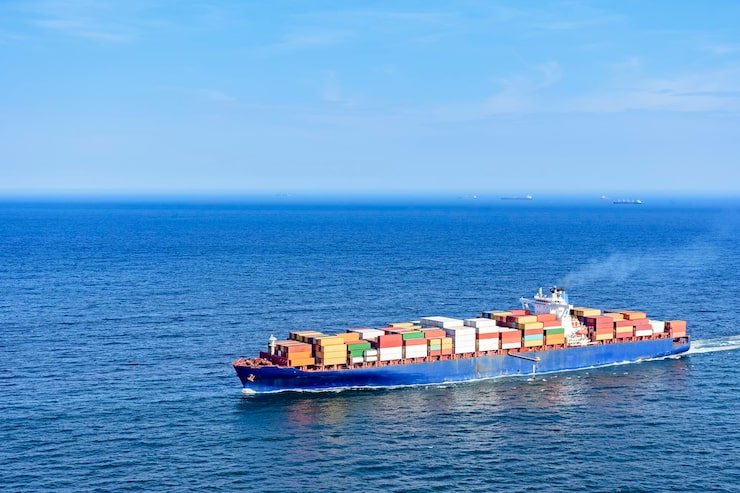- By TOP CHINA FREIGHT
- September 18, 2025
- Shipping
Table of Contents
Shipping goods across borders is one of the most crucial aspects of global trade, and freight rates from China to India play a decisive role in profitability. Importers often struggle with fluctuating rates, long transit times, and hidden charges. However, with the right knowledge of shipping methods, cost structures, and customs requirements, businesses can plan better and optimize their supply chains. This guide breaks down everything you need to know to manage costs, improve delivery schedules, and choose the best freight options.

What factors affect freight rates from China to India?
Fuel prices
fluctuations increase or decrease overall shipping costs.
Shipping method
air is fastest but costly; sea is economical; rail offers balance.
Seasonal demand
peak seasons raise rates due to capacity shortages.
Cargo type
weight, size, and nature of goods affect charges.
Port congestion & customs clearance
delays increase transit time and handling fees.
Incoterms (FOB/CIF)
determine responsibility for freight, insurance, and cost sharing.
By understanding these factors, importers can negotiate smarter with freight forwarders and schedule shipments early to avoid sudden price hikes.
How much does sea freight cost from China to India?

Sea freight is the most widely used shipping method because it is affordable for both small and bulk shipments. Freight rates from China to India for sea shipping usually depend on container size, weight, and port of destination.
Below is a typical sea freight cost breakdown:
Sea freight is ideal if your shipment is not time-sensitive and you want to minimize costs. However, delays during customs clearance at Indian ports may add to the overall timeline. Therefore, planning buffer time is advisable.
How much does air freight cost from China to India?

Air freight is significantly faster than sea freight but comes at a higher price. Businesses often use air freight for high-value goods, urgent shipments, or perishable items.
| Weight Bracket | Average Cost per Kg (USD) | Transit Time | Best Use Case |
|---|---|---|---|
| 45–100 kg | $5.00 – $6.50 | 3–6 days | Small parcels |
| 100–300 kg | $4.20 – $5.50 | 3–6 days | Mid-size loads |
| 300+ kg | $3.80 – $5.00 | 3–6 days | Large urgent shipments |
Although air freight is costlier, it reduces warehousing needs by speeding up delivery schedules. Moreover, during peak seasons such as Chinese New Year or Diwali, air cargo prices may increase due to limited capacity.
Can rail freight be a good option between China and India?

Rail freight is less common compared to sea and air routes, but it is emerging as a practical option. Through land connections via Central Asia, goods can be transported overland. While not as fast as air, it is quicker than sea freight and often cheaper than air freight.
| Mode | Average Transit Time | Approx. Cost (per ton) | Pros | Cons |
|---|---|---|---|---|
| Rail Freight | 14–18 days | $1,500 – $1,800 | Balanced speed & cost | Limited availability |
Rail freight is particularly useful for high-volume cargo that needs faster delivery than sea freight but does not justify air freight rates. However, the service depends heavily on customs coordination across multiple borders.
What are the customs and import charges in India?

Besides shipping costs, importers must account for customs duties and taxes in India. These charges vary depending on product classification, value, and applicable trade agreements. Key fees include:
- Basic Customs Duty (BCD): Generally 5–10% on most products.
- Integrated Goods and Services Tax (IGST): Ranges between 5%–28%, depending on the product category.
- Social Welfare Surcharge: 10% of the BCD.
- Handling Charges: For port operations and customs paperwork.
How do seasonal trends influence freight rates?
Freight rates from China to India fluctuate based on seasonal demand. For instance, during Chinese New Year or the Diwali festive season, shipping costs rise because of increased demand. Similarly, the fourth quarter of the year often sees higher rates due to holiday sales preparations.
On the other hand, rates are usually lower during the off-peak months of April to June. Importers can save significantly by aligning their shipping schedules with these seasonal patterns.
Case study: Reducing freight costs through smart planning

A mid-sized electronics importer in Mumbai frequently struggled with high logistics costs. Initially, the company relied solely on air freight due to product sensitivity. However, after consulting with a professional freight forwarder, they adopted a hybrid strategy.
Strategy:
Time-sensitive products were sent by air, while bulk items shipped by sea.
Result:
Logistics costs reduced by nearly 28%.
Extra Benefit:
Improved delivery consistency with buffer inventory management.
This example highlights how careful planning and diversified shipping methods can optimize supply chain efficiency while controlling costs.
What are the pros and cons of different shipping methods?
| Shipping Mode | Pros | Cons |
|---|---|---|
| Sea Freight | Low cost, high capacity | Slow, subject to delays |
| Air Freight | Fast, reliable, safe | Expensive, weight restrictions |
| Rail Freight | Balanced cost & time | Limited routes, customs complexity |
Choosing the right method depends on your product type, urgency, and budget. A freight forwarder can help you determine the best mix for your needs.
How can businesses reduce freight rates from China to India?
Advance bookings secure better rates.
Sharing container space reduces per-unit cost.
Choosing FOB instead of CIF may save on freight.
Avoid shipping during major festivals.
Professionals provide access to discounted rates.
Conclusion
Freight rates from China to India vary depending on shipping methods, container size, and seasonal trends. Sea freight remains the most economical choice, while air freight ensures speed for urgent cargo. Rail freight is emerging as a balanced alternative for certain shipments. Moreover, understanding customs charges, seasonal fluctuations, and smart logistics planning can significantly reduce costs. Businesses that combine professional freight forwarding with optimized strategies gain both cost savings and reliable delivery schedules.
Need a Shipping Quote?
If you want expert guidance and peace of mind, our team is ready to assist.
TJ China Freight offers tailored solutions to help businesses of all sizes ship more reliably from China.

FAQ
Q1:Which ports in India are best for receiving goods from China?
Popular entry points include Nhava Sheva (Mumbai), Chennai, and Kolkata. The choice depends on proximity to your business location and available shipping routes.
Q2:Can small businesses ship LCL cargo from China to India?
Yes, Less than Container Load (LCL) is ideal for small shipments. You pay only for the space used, making it cost-effective for businesses with limited cargo.
Q3:What hidden charges should importers watch out for?
Beyond freight rates, importers must consider customs duties, handling fees, warehousing charges, and port surcharges. Requesting a detailed cost breakdown helps avoid surprises.
Q4:Is insurance necessary for freight shipments?
Insurance is not mandatory but highly recommended. It protects against loss or damage during transit and is especially important for high-value or fragile goods.
Q5:Do freight rates from China to India change frequently?
Yes, rates fluctuate with fuel prices, seasonal demand, and global shipping capacity. Regular monitoring and early booking can help secure more stable rates.
